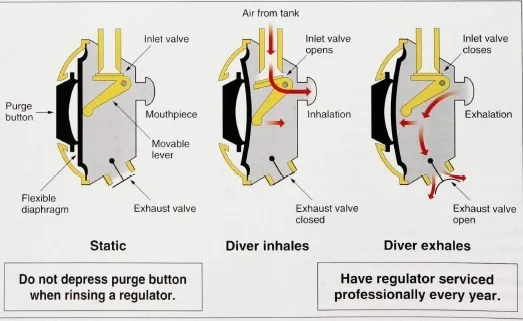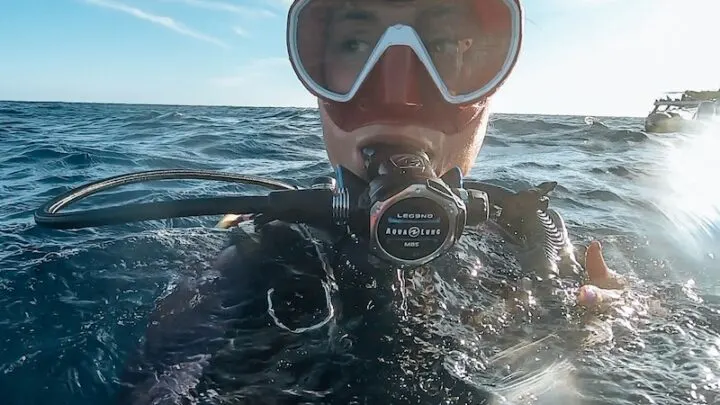Over on our Girls that Scuba Facebook group we have started a new series called ‘Safety Sunday” where every other Sunday our resident safety diver and GTS moderator Chloe Strauss creates a post on a popular safety topic that comes up again and again and explains more about it. This particular topic about the quarter back turn gained a lot of attention and a lot of members thanking Chloe for the amazing information, so we wanted to share it further and hope you all learn something too!
Check out our last safety article: The Quarter Turn Back
Should we breathe off of both regulators before a dive?
The answer to this week’s question is threefold: we should breathe off of both regulators to make sure that they are both working as they should, to make sure you don’t have bad air, and as a final check to make sure your air is on.
How do I know if my regulators are working as they should?
The answer to this question is pretty simple; can you breathe? If a regulator is hard to breathe from it may need service, or if you’re using a rental you may want to get a different one if it’s difficult to draw air from. You want to ensure that your regulator is providing air on demand.
Some people may just hit the purge button, but ideally you’d take a breath from the regulator. Inside your second stage is a flexible diaphragm over a movable lever. When you breathe in the diaphragm presses down on the lever, which opens an inlet so you can breathe in. When you exhale the diaphragm relaxes, releasing the lever and shutting off air supply. The purge button is on top of the diaphragm so when you push it you’re manually pressing down the lever. What you really want to know is if the lever will respond to your breath, not your touch. This image illustrates this concept.

How do I know if I have bad air? Bad air will be covered in the next Safety Sunday on February 2, so for now just know that you should sniff and taste your air. Oil, gas fumes, and other contaminants can present as an oily taste, oily smell, or bad odor. If you suspect gas contamination DO NOT use the cylinder and immediately alert an employee if you’re diving with a scuba shop.
Finally, breathing off of your regulator while looking at your pressure gauge can tell you if your air is on. If you or your buddy turned off your air and released the pressure from your hoses by pressing the purge button, taking a breath from your regulator will tell you immediately that your air is off. If you or your buddy turned your air off and didn’t press the purge button, you’ll be able to take a few breaths from your regulator before the air runs out. If your air is only on a quarter turn, you’ll continue to receive air until the pressure at depth causes your air to cut off (see the last Safety post about the quarter turn back).
As a final check, you can take a few deep breaths from your regulator while looking at your pressure gauge. If the needle drops with each breath, that means your air is off. If the needle bounces down and then back up, it means your air is only partially on.
In conclusion, you should breathe off of your regulators twice before entering the water- once to make sure the regulator is functioning to your liking and to taste/smell the air, and then another time right before entering the water to make sure your air is all the way on.


